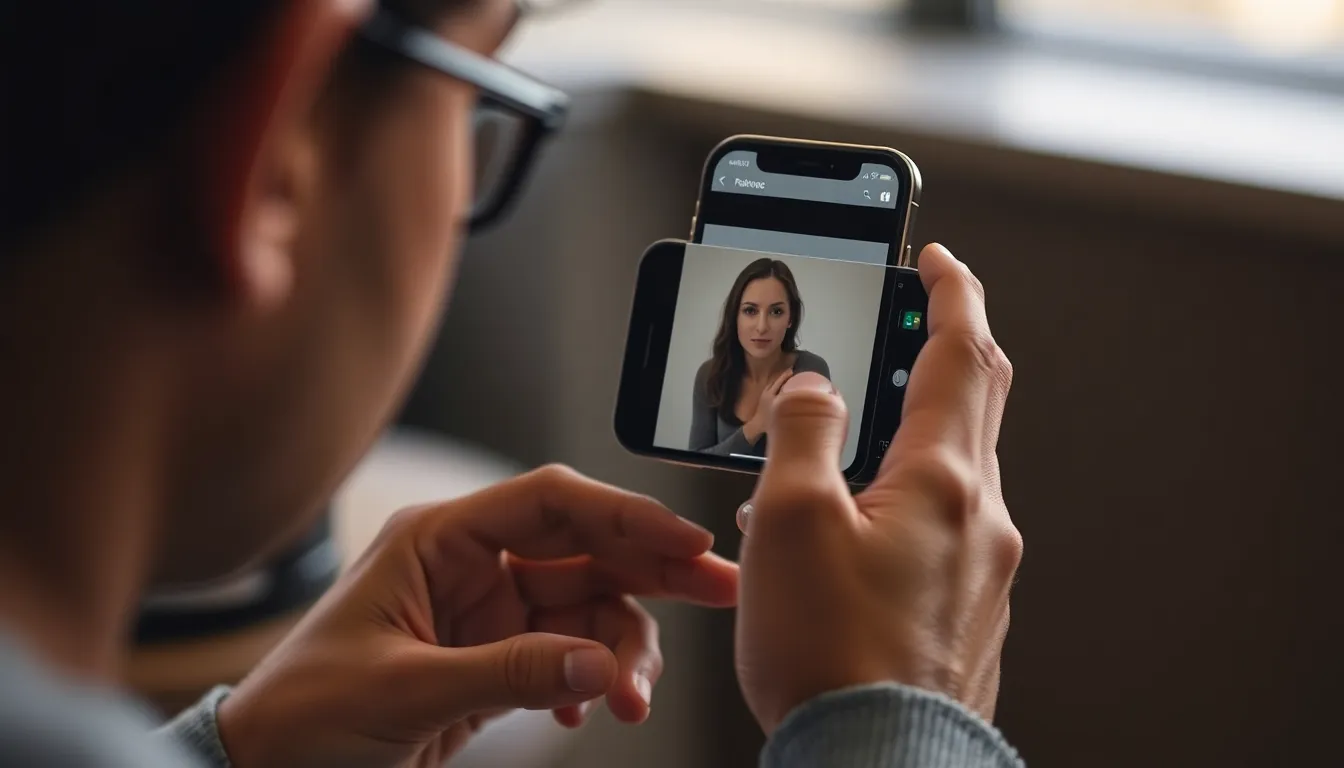Table of Contents
ToggleEver snapped a picture that would’ve been perfect if it weren’t for that one photobomber stealing the spotlight? Or maybe a friend decided to make a goofy face right when you hit the shutter? Fear not! Deleting unwanted guests from your photos on an iPhone is easier than finding a cat video on the internet.
Overview of Photo Editing on iPhone
Editing photos on an iPhone offers users a variety of tools and features. Users can enhance images, adjust lighting, and apply filters directly through the Photos app. Removing unwanted elements, like people or objects, has become an easier task with the latest iOS updates.
The removal feature allows for quick adjustments. Users can tap on an image, select the edit option, and then explore various editing tools. The retouch feature proves particularly useful for eliminating distractions. It can be performed by selecting the object and refining the surrounding area to achieve a seamless look.
Utilizing third-party apps enhances the photo editing experience further. Apps such as Snapseed or TouchRetouch provide additional functionalities, offering greater control over the editing process. Each app presents distinct features, allowing users to choose based on their preferences.
Using the editing tools effectively leads to a polished photo. Enhancing color saturation emphasizes details in the photo. Cropping can improve composition by focusing on the main subject. Brightness adjustments may also help to bring out hidden elements in darker images.
Photo editing on an iPhone caters to users of all experience levels. Whether someone is a beginner or a photography enthusiast, there are tools available to suit their needs. By mastering these features, individuals can create stunning images ready for sharing or printing.
Using the Built-in Photos App

Editing photos on an iPhone involves simple steps to remove unwanted people. The Photos app provides intuitive tools for this process.
Accessing the Photo Editing Tools
Users open the Photos app and choose the image to edit. Tapping the edit button at the top right reveals several options. The editing interface includes adjustments for light, color, and cropping. For removing distractions, he or she selects the retouch tool found in the lower menu. Accessing this feature enables quick modifications without the need for third-party applications.
Removing People with the Retouch Tool
To remove a person from a photo, one should select the retouch tool after choosing the image. Users can then tap on the unwanted element in the photo. The app automatically fills in the area using surrounding pixels. This method allows for seamless edits that maintain the photo’s quality. For larger distractions, he or she can tap multiple times for a more thorough removal. Effective use of the retouch tool can significantly enhance the overall appearance of the image.
Third-Party Apps for Removing People
Third-party apps enhance the photo editing experience on an iPhone, providing additional features to remove unwanted elements.
Popular Apps to Consider
Snapseed stands out as a favorite choice among users. It offers a healing tool specifically designed for removing unwanted subjects with precision. TouchRetouch also delivers excellent results, focusing on removing objects and people effortlessly. Another app worth mentioning is Photoshop Fix, which combines advanced editing features with user-friendly tools for editing photos. Users can easily find these applications on the App Store, making them accessible for quick downloads and usage.
Comparative Features and Usability
Each app presents unique features catering to different editing needs. Snapseed’s healing tool utilizes surrounding pixels effectively for seamless blends. TouchRetouch, known for its simplicity, streamlines the removal process, making it user-friendly for all skill levels. Photoshop Fix provides a wide range of editing capabilities, appealing to more advanced users. Usability varies; Snapseed requires familiarity with its interface, while TouchRetouch focuses on straightforward navigation. Selecting the right app depends on personal preference and editing requirements.
Tips for Optimal Results
Achieving the best results when deleting people from photos on an iPhone involves attention to detail and a few careful techniques.
Lighting and Background Considerations
Lighting plays an essential role in photo editing. Natural light often produces the best results, ensuring even coloring and fewer shadows. Selecting images with uniform lighting makes it easier to blend edits seamlessly. When backgrounds are cluttered or inconsistent, distractions in the image can complicate the editing process. Aim for photos where the subject stands out clearly against the backdrop. Consistency in lighting and background enhances the overall quality, making removed elements less noticeable.
Maintaining Image Quality
Retaining image quality during edits remains crucial. Photos edited with precision should preserve their original resolution. Using the retouch tool effectively prevents pixelation or blurring. Keeping edits subtle maintains the integrity of the image. Excessive alterations can create an unnatural look; subtle adjustments yield a more realistic outcome. Always zoom in on the image to observe details closely before finalizing edits, ensuring clarity and cohesiveness. With careful attention, it’s possible to achieve polished results that look professionally done.
Deleting unwanted people from photos on an iPhone is a straightforward process that can transform an ordinary snapshot into a stunning image. With the built-in Photos app and various third-party tools at their disposal, users can easily enhance their photos and create a polished final product.
By utilizing the retouch feature and exploring apps like Snapseed and TouchRetouch, anyone can achieve professional-looking edits. Attention to detail and an understanding of lighting and backgrounds play crucial roles in ensuring seamless results. With a little practice and the right techniques, users can confidently remove distractions and elevate their photography skills.





